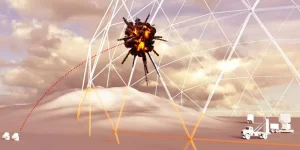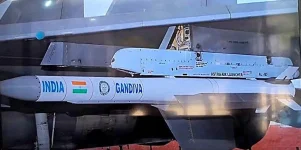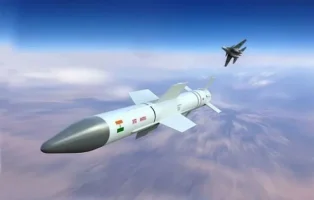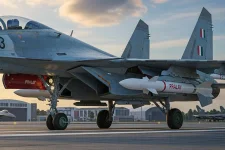- Views: 2K
- Replies: 11
India is moving steadily toward a major enhancement of its air combat capabilities with the Astra Mk3, a next-generation air-to-air missile.
According to new reports, the indigenous missile is projected to complete its development trials and receive clearance for production by 2028, with plans for induction into the Indian Air Force (IAF) by the early 2030s.
This advanced weapon, also known as 'Gandiva', is a beyond-visual-range (BVR) missile designed by the Defence Research and Development Organisation (DRDO).
It is engineered to strike hostile aerial targets at an exceptional distance of up to 350 kilometres, placing India in a select group of nations with such long-range aerial technology.
The key to the Astra Mk3's remarkable range is its advanced propulsion system, a Solid-Fuel Ducted Ramjet (SFDR).
Unlike conventional solid-propellant rockets, which burn out quickly, an SFDR is an air-breathing engine. It ingests atmospheric oxygen for combustion, which significantly reduces the need to carry a heavy oxidizer.
This allows the missile to fly further, sustain high supersonic speeds (reportedly up to Mach 4.5), and maintain energy for manoeuvres during the final phase of its attack.
This extended reach is a strategic game-changer, enabling the IAF to neutralize high-value assets like enemy AWACS (Airborne Warning and Control Systems) and mid-air refuelling tankers from a safe standoff distance.
By targeting these "force multipliers," a small number of missiles can effectively cripple an adversary's ability to coordinate a large-scale air operation.
For its guidance, the Astra Mk3 will be equipped with a state-of-the-art indigenous Gallium Nitride (GaN) based AESA (Active Electronically Scanned Array) seeker.
This advanced "brain" of the missile is highly resistant to electronic jamming and provides superior targeting. This system, combined with mid-course updates via data-link, allows a fighter pilot to launch the missile and turn away, a capability known as "lock-on-after-launch" (LOAL).
The missile, which weighs approximately 220 kilograms and measures 4 meters in length, is progressing through its development.
Following successful ground-based validation of its propulsion and seeker systems, the DRDO is reportedly preparing for live-fire trials. These trials, expected to begin in late 2025, will involve launching the missile from frontline fighters such as the Su-30MKI and the future Tejas Mk2.
Once the trials are complete and production clearance is granted in 2028, mass production will be handled by the state-owned enterprise Bharat Dynamics Limited (BDL).
The Astra Mk3 is the pinnacle of India's indigenous air-to-air missile programme, which aims to achieve self-reliance in critical defence technologies.
It completes a tiered family of weapons, which includes the operational Astra Mk1 (110 km range) and the in-development Astra Mk2 (around 200 km range), ensuring the IAF can cover all ranges of BVR combat.





